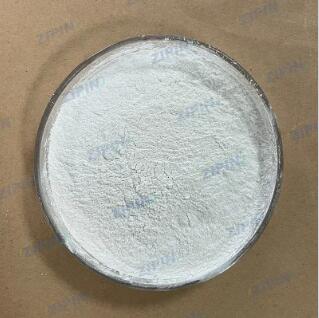Unveiling Curdlan: Exploring Its Composition and Potential Applications
2024-03-18
In the world of polysaccharides, Curdlan stands out as a fascinating and versatile compound with a myriad of applications across various industries. From food to pharmaceuticals and beyond, Curdlan's unique properties make it a valuable ingredient in countless products. But what exactly is Curdlan, and what makes it so special? Let's delve into its composition and explore its potential applications.
What is Curdlan?
Curdlan is a linear β-1,3-glucan polysaccharide, which means it is composed of glucose molecules linked together in a specific arrangement. Unlike many other polysaccharides, such as starch or cellulose, Curdlan is notable for its helical structure, which gives it distinctive properties that set it apart in the world of biomaterials.
Chemical Composition of Curdlan
Curdlan's chemical composition is relatively simple yet remarkably effective. It consists of repeating units of glucose molecules linked together through β-1,3 glycosidic bonds. This linear structure is responsible for Curdlan's characteristic helical conformation, which plays a crucial role in its functional properties.
Key Properties of Curdlan
1. Gelation Properties: One of the most notable properties of Curdlan is its ability to form gels in the presence of certain ions, particularly potassium ions. This gelation process is reversible, making Curdlan gels suitable for a wide range of applications in food and pharmaceutical formulations.
2. Thermoreversible Gelation: Curdlan gels exhibit thermoreversible behavior, meaning they can undergo gelation and sol-gel transitions in response to changes in temperature. This property makes Curdlan particularly useful in products where temperature stability is crucial.
3. Water Absorption: Curdlan has a high capacity for water absorption, making it an effective thickening agent and stabilizer in food products. Its ability to retain water also contributes to the texture and mouthfeel of various food formulations.
4. Biocompatibility: Curdlan is biocompatible and biodegradable, making it suitable for use in biomedical applications such as drug delivery systems, wound dressings, and tissue engineering scaffolds.
Applications of Curdlan
1. Food Industry: Curdlan is widely used in the food industry as a gelling agent, thickener, and stabilizer in products ranging from soups and sauces to bakery items and confectionery. Its thermoreversible gelation properties make it ideal for creating firm gels in processed foods.
2. Pharmaceuticals: In the pharmaceutical industry, Curdlan finds applications in drug delivery systems, where its biocompatibility and ability to form hydrogels make it an attractive candidate for controlled release formulations.
3. Biotechnology: Curdlan-based nanoparticles and hydrogels are being explored for various biotechnological applications, including enzyme immobilization, biosensors, and bioremediation.
4. Cosmetics: Curdlan is utilized in cosmetics and personal care products for its thickening and stabilizing properties, helping to enhance the texture and performance of creams, lotions, and other formulations.
Conclusion
Curdlan's unique chemical composition and versatile properties make it a valuable ingredient in a wide range of industries. From food to pharmaceuticals and beyond, Curdlan's ability to form gels, its biocompatibility, and its water-absorbing capabilities make it an indispensable component in countless products. As research continues to uncover new applications and refine its properties, Curdlan is poised to play an increasingly important role in shaping the future of biomaterials and functional ingredients.



